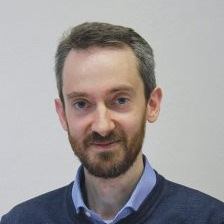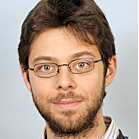Attosecond Science and Technology: Principles and Applications
A special issue of Applied Sciences (ISSN 2076-3417). This special issue belongs to the section "Optics and Lasers".
Deadline for manuscript submissions: closed (30 April 2019) | Viewed by 67692
Special Issue Editors
Interests: ultrafast science; attosecond physics; ultrashort light pulse generation and applications; ultrafast phenomena in the matter
Interests: attosecond science and technology; optics and photonics
Special Issue Information
Dear Colleagues,
Since the first demonstration of attosecond pulses in 2001, the field of attosecond science and technology has grown exponentially, and new attosecond laboratories have emerged throughout the world. Impressive progress in laser technology (in terms of achievable pulse duration and intensity, wavelength tunability and repetition rate) and the introduction of novel experimental techniques (such as attosecond photoelectron spectroscopy, attosecond all-optical investigation methods, high-order harmonic spectroscopy, etc.) have opened the way to the investigation and control of ultrafast electron dynamics in atoms, molecule, and solids.
This Special Issue aims to analyze recent developments and future trends in “Attosecond Science and Technology”. Topics of interest include, but are not limited to, the following areas:
- Advanced laser technology for attosecond science
- High-order harmonic generation in gases and solids
- Attosecond pulse generation and characterization
- Attosecond measurement techniques
- Ultrafast phenomena on attosecond/few-femtosecond timescales in atoms, molecules, nanostructures and condensed phase
- New sources of ultrafast XUV and X-rays
Dr. Matteo Lucchini
Guest Editors
Manuscript Submission Information
Manuscripts should be submitted online at www.mdpi.com by registering and logging in to this website. Once you are registered, click here to go to the submission form. Manuscripts can be submitted until the deadline. All submissions that pass pre-check are peer-reviewed. Accepted papers will be published continuously in the journal (as soon as accepted) and will be listed together on the special issue website. Research articles, review articles as well as short communications are invited. For planned papers, a title and short abstract (about 100 words) can be sent to the Editorial Office for announcement on this website.
Submitted manuscripts should not have been published previously, nor be under consideration for publication elsewhere (except conference proceedings papers). All manuscripts are thoroughly refereed through a single-blind peer-review process. A guide for authors and other relevant information for submission of manuscripts is available on the Instructions for Authors page. Applied Sciences is an international peer-reviewed open access semimonthly journal published by MDPI.
Please visit the Instructions for Authors page before submitting a manuscript. The Article Processing Charge (APC) for publication in this open access journal is 2400 CHF (Swiss Francs). Submitted papers should be well formatted and use good English. Authors may use MDPI's English editing service prior to publication or during author revisions.
Keywords
- Advanced laser technology for attosecond science
- High-order harmonic generation in gases and solids
- Attosecond pulse generation and characterization
- Attosecond measurement techniques
- Ultrafast phenomena on attosecond/few-femtosecond timescales in atoms, molecules, nanostructures and condensed phase
- New sources of ultrafast XUV and X-rays






